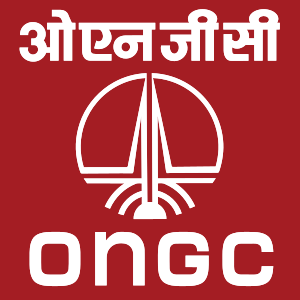With an eye on improving farm productivity, the government will spend Rs 50,000 crore over the next five years under the Pradhan Mantri Krishi Sinchai Yojana (PMKSY).
Currently, 142 million hectares are used for cultivation, of which only 45 per cent farm land is under irrigation. For the current fiscal, allocation is Rs 5,300 crore. The spending this year is expected to bring an additional 6 lakh hectares under irrigation while 5 lakh hectares will benefit from drip irrigation. That apart, 1,300 watershed projects have been marked for completion.
The major objective of the PMKSY is to achieve convergence of investments in irrigation at the field level, expand cultivable area under assured irrigation (har khet ko pani), improve on-farm water use efficiency to reduce wastage of water, enhance adoption of precision-irrigation and other water-saving technologies (more crop per drop).
All structures created under the schemes will be geo-tagged.
A National Executive Committee (NEC) is to be constituted under the Chairmanship of the Vice-Chairman, NITI Aayog, to oversee programme implementation, allocation of resources, inter-ministerial coordination, monitoring and performance assessment, addressing administrative issues.
A training programme, drawn up by the faculty of Indian Council for Agricultural Research institutes, the National Water Academy and the National Institute for Rural Development – besides leading practitioners and experts from the sector – will be conducted over the next three months. After this period, the officers will spend over one month in the designated district, interact with all stakeholder departments to capture the relevant data on a portal specially designed by the National Informatics Centre (NIC), and prepare the outline of the district irrigation potential, including the scope for precision farming (micro-irrigation), and where necessary, with solar power back-up.
Apart from the irrigation projects, INR 200 crore from this scheme will be earmarked as Agri-Tech Infrastructure Fund (ATIF) – the corpus required to promote the National Agricultural Market (NAM). This will give farmers easy access to the markets for sale of their produce.
Ref:
Currently, 142 million hectares are used for cultivation, of which only 45 per cent farm land is under irrigation. For the current fiscal, allocation is Rs 5,300 crore. The spending this year is expected to bring an additional 6 lakh hectares under irrigation while 5 lakh hectares will benefit from drip irrigation. That apart, 1,300 watershed projects have been marked for completion.
The major objective of the PMKSY is to achieve convergence of investments in irrigation at the field level, expand cultivable area under assured irrigation (har khet ko pani), improve on-farm water use efficiency to reduce wastage of water, enhance adoption of precision-irrigation and other water-saving technologies (more crop per drop).
All structures created under the schemes will be geo-tagged.
A National Executive Committee (NEC) is to be constituted under the Chairmanship of the Vice-Chairman, NITI Aayog, to oversee programme implementation, allocation of resources, inter-ministerial coordination, monitoring and performance assessment, addressing administrative issues.
A training programme, drawn up by the faculty of Indian Council for Agricultural Research institutes, the National Water Academy and the National Institute for Rural Development – besides leading practitioners and experts from the sector – will be conducted over the next three months. After this period, the officers will spend over one month in the designated district, interact with all stakeholder departments to capture the relevant data on a portal specially designed by the National Informatics Centre (NIC), and prepare the outline of the district irrigation potential, including the scope for precision farming (micro-irrigation), and where necessary, with solar power back-up.
Apart from the irrigation projects, INR 200 crore from this scheme will be earmarked as Agri-Tech Infrastructure Fund (ATIF) – the corpus required to promote the National Agricultural Market (NAM). This will give farmers easy access to the markets for sale of their produce.
Soil Health Card Scheme
Soil Health Card Scheme is a scheme launched by the Government of India in February 2015. Under the scheme the government plans to issue Soil card to farmers which will carry crop-wise recommendations of nutrients and fertilizers required for the individual farms to help farmers to improve productivity through judicious use of inputs. All soil samples are be tested in various soil testing labs across the country. Thereafter the experts will analyse the strength and weaknesses (micro-nutrients deficiency) of the soil and suggest measures to deal with it. The result and suggestion will be displayed in the cards. The Government plans to issue the cards to 14 crore farmers.
An amount of 568 crores was allocated by the government for the scheme.
Soil Health Card Scheme is a scheme launched by the Government of India in February 2015. Under the scheme the government plans to issue Soil card to farmers which will carry crop-wise recommendations of nutrients and fertilizers required for the individual farms to help farmers to improve productivity through judicious use of inputs. All soil samples are be tested in various soil testing labs across the country. Thereafter the experts will analyse the strength and weaknesses (micro-nutrients deficiency) of the soil and suggest measures to deal with it. The result and suggestion will be displayed in the cards. The Government plans to issue the cards to 14 crore farmers.
An amount of 568 crores was allocated by the government for the scheme.
Ref:
- http://articles.economictimes.indiatimes.com/2015-07-02/news/64039148_1_water-sources-mantri-krishi-sinchai-yojana-hectares
- http://blogs.economictimes.indiatimes.com/et-commentary/pradhan-mantri-krishi-sinchai-yojana-mere-fund-allocations-wont-serve-purpose/
- https://en.wikipedia.org/wiki/Soil_Health_Card_Scheme
- http://epaperbeta.timesofindia.com/Article.aspx?eid=31808&articlexml=Govt-to-launch-soil-health-card-plan-on-16022015010024
- http://www.business-standard.com/article/government-press-release/first-training-program-on-pradhan-mantri-krishi-sinchai-yojna-for-all-115082401180_1.html
Agriculture
cost_₹ 50'000 Cr
Irrigation
Rural











































